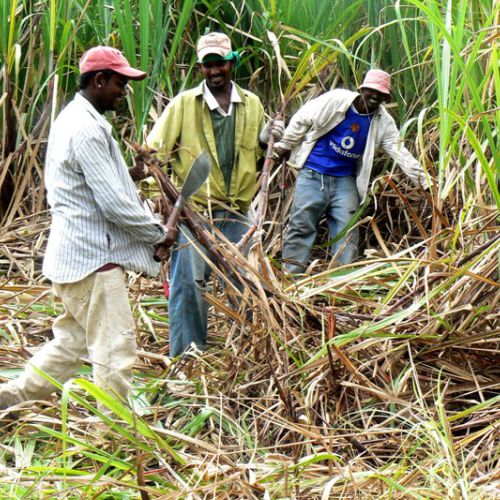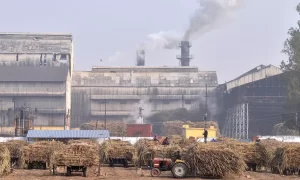Weather Update: Amid soaring temperatures in Punjab, Haryana, Chandigarh, Centre may issue advisory on sugarcane, pulses soon

Agriculture News: The central government is monitoring crops like sugarcane and pulses amid rising temperatures. Concerns include sugarcane diseases like red rot and top borer. Severe heatwave alerts are issued for Punjab, Haryana, Chandigarh, and New Delhi, with temperatures reaching 47°C. Heavy rainfall warnings for Tamil Nadu may obstruct pulse sowing. The government plans medicine, awareness programs, and district-level initiatives to protect farmers from waterlogging and heat-related crop damage.
Agriculture News: The central government is monitoring the situation of certain crops prone to damage amid high temperatures as the mercury rises in several parts of the country. The Union government may issue advisories on crops like sugarcane and pulses soon, sources told Zee Business.
The government action comes at a time when the rising temperature is fuelling concerns about sugarcane diseases such as red rot and top borer that may damage the crop. While sugarcane is a kharif crop, pulses are sown in both kharif as well as rabi seasons.
The India Meteorological Department (IMD), the country’s weather office, has issued severe heatwave red alerts for Punjab, Haryana and Chandigarh, with the possibility of heatwave- to severe heatwave-related conditions over the coming days. The IMD has also forecast a heatwave along with “hot and humid” weather warning in New Delhi over the next seven days, with temperatures in the national capital rising to as high as 47 degrees Celsius.
While the government is monitoring the situation closely, a report containing data on several districts in different parts of the country has been sent to the Centre for review, according to the sources.
The central government is likely to issue instructions as well as medicine- and awareness-related programmes for several regions likely to be affected by the rising mercury, the sources said.
Meanwhile, several centres of pulses production are on high alert amid concerns about heavy rainfall obstructing the sowing of such crops.
Weather office IMD has predicted ‘heavy’ to ‘very heavy’ rainfall in the southern and western regions of Tamil Nadu over the next three days due to a cyclonic formation above these areas, after heavy downpour hit several areas in the state causing waterlogging and affecting the inflow of tourists.
The state’s disaster department has issued an alert for travelling in a host of districts including Kanniyakumari, Tirunelveli, Tenkasi, Dindigul, Coimbatore, Virudhunagar, Theni, and the Nilgiris.
The government has also started working on a district level programme aimed at protecting the farmer against water-logging and sowing as per season.
What are kharif and rabi seasons?
Kharif and rabi crops are two crucial categories in agriculture, each with distinct characteristics. Kharif crops are sown in the monsoon season and harvested in autumn, whereas rabi crops are sown in the winter season and harvested in spring.
While Kharif crops are harvested in the months of September-October, rabi crops are harvested around April-June.
















